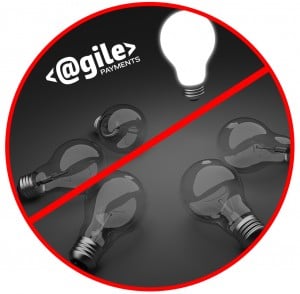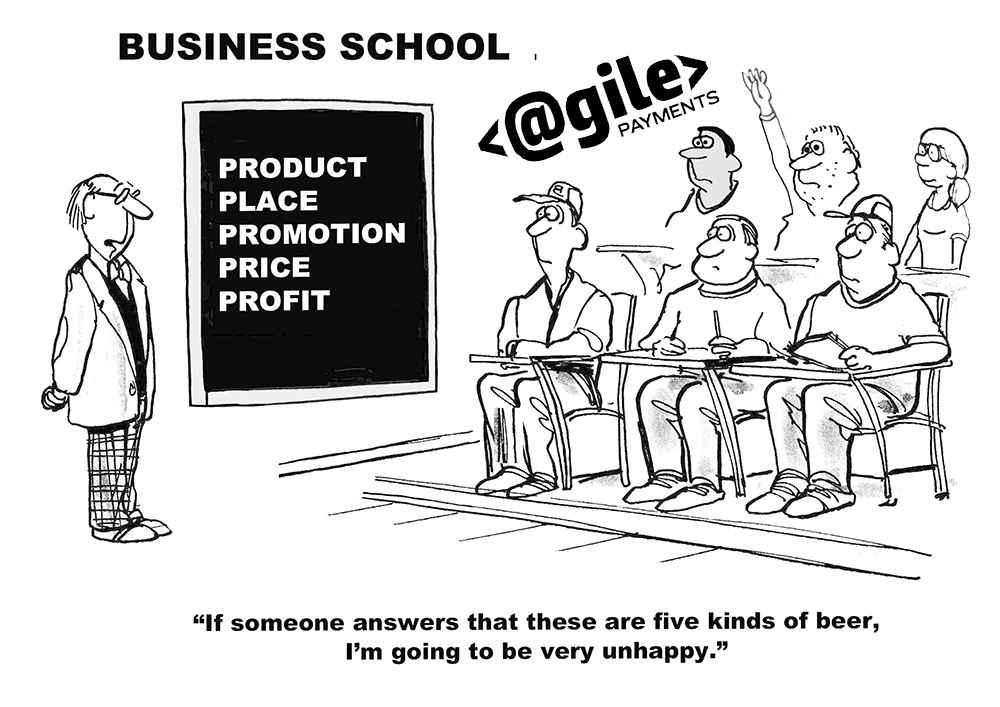If you’re an SaaS marketer or service provider and you’re looking to create a viable inbound marketing budget, you’re in for a big surprise if you’re hoping to follow present-day conventional marketing methods.
You’re going to have to exercise and entertain that elusive animal called “original thought.” We know, in reality, there is no such thing as a purely original thought. It’s overrated. Your thinking will have to take into consideration the best present-day tactics and combine, tweak and alter with your own unique twist.
That’s what we’re here for. Our goal is to help you navigate the concourse and to find a way to make your SaaS inbound marketing work for you. The first thing will be to come with a plan of attack, and then create a workable budget.
Are you up for it?
What’s Inbound Marketing?
Here it is. Take this explanation and tuck it under your pillow at night. Inbound marketing is the effort and methods used to promote a company through podcasts, blogs, videos, eBooks, whitepapers, SEO, newsletters, social media marketing, and tools and methods that haven’t been created yet.
As you know, the landscape is in a constant state of flux. So, remain flexible, curious and open-minded. The major goal of inbound marketing, with respect to SaaS, is to create the marketing funnels what will attract customer through different stages of the “buy” funnel.
SaaS is a waiting game, because most customers, in fact all, expect a free trial version. SaaS, therefore, has to be a calculated waiting game of tracking and presenting the prospect with the right buying opportunity.
Most SaaS companies, in the beginning at least, are focused on getting their name out there in the world. Traditional marketing tactics can eat up a company’s financial resources in a hurry—leaving nothing or very little to show for the efforts.
Benefits of Inbound Marketing
Inbound marketing offers definite benefits for companies, and they include the following: rapid growth acceleration and cost-efficiency. Another point to make about inbound marketing is that it can be leveraged to engage prospects and customers with valuable information and ultimately create a great user experience along the way.
You simply have to see the big picture and treat it as something that is far more than just a series of blog posts. It has to be viewed as a long-term investment for it to be effective.
Creating Your Inbound Marketing Budget
To create a budget the first order of business is to sell inbound marketing as a long-term strategy—this requires effective buy-in and a demonstration that ROI will be realized.
- Selling the Long-Term Investment – Take the time to thoroughly educate your internal stakeholders about what internal marketing can accomplish. If they see it as a one-off campaign, you’ll never succeed in selling the plan. Also, you should never try to sell inbound marketing as a cost-cutting endeavor.

The reality is that studies have shown that inbound marketing will typically generate leads, overtime, at 60% of the cost of outbound marketing. Outbound marketing is the practice of allowing customers to find you through paid search or organic search techniques. There’s nothing wrong with outbound marketing as it can be most effective in securing new clients. However, it the continual education and monitoring of clients through the sales funnel that works for SaaS marketers. - Using Budgeting Benchmarks – Consider your initial funding, present revenue, and where you want your business to be next year, and the next.
Setting Your Budget Limits
Tradition way of setting marketing budgets won’t apply to SaaS. You’ll need to spend to create the type of brand awareness that will eventually make you profitable. You may have to forego being profitable during this phase and get aggressive with your marketing efforts. Typically, companies will invest between 10 to 89% of their annual revenue. With Saas, you’re looking at 40% or more. This is not a one-off goal either. To realize continual growth, you’ll have to keep fueling your marketing efforts with cash.
Test campaigns will be a major factor in determining what’s working and what’s not. To scale those inbound marketing campaigns, you’ll need to have a strong grip on several metrics.
- Rate of Conversion. This usually refers to the percentage of web traffic that converts into a lead. Keep in mind though that “conversion” will be different with respect to SaaS. In SaaS, a conversion is someone who requests a free demo, free trial, or who wants to speak to your sales department.

In this regard, conversion rates may also be the result of channels. Someone entering your space through Google or Bing search might be a stronger candidate than someone coming from Twitter. So, it would be worth your time to measure the conversion rates for each channel separately. - Rate of Closure. This should focus on the actual percentage of leads that eventually become customers. In SaaS, your leads are those who requested to speak to sales or wanted a free trial or demo. Closure is when these people actually become paying customer.
- CPA (Cost per Acquisition). It really gets down to crunching the numbers! What are you willing to spend to acquire a new customer? This should be an easy calculation. Calculate your expenditures at 10% of what that customer will bring annual revenue. If a customer spends $200 a month, then your cost of acquiring that customer would be $240.
Your web presence is still critically important. You should have a website that is geared toward mobile users. Mobile use will only continue. You also be dinged if you are not optimized for mobile with respect to Google’s algorithm changes.
The power of content marketing is not to be overlooked either. Blog to become the notable expert in your field. Engage in social media at every opportunity. These will always be critical elements that determine how your site will rank on the big three search engines: Bing, Yahoo, and Google.
Your SaaS Inbound Marketing Strategy
Like any form of marketing, success will be the result of creating a thoughtful strategy. And any strategy will require adequate funding. Lead management and measurement is the key.
Your marketing technology will also be a critical element! What are your plans for investing in software that will address market automation, managing web content, creating leads, and analyzing your efforts? Who will be in charge of these functions and is there an allocated budget?

We briefly mentioned content creation, so let’s delve a little deeper into the subject. Creating content should be an ongoing endeavor. It’s critical because content will fuel your website’s ranking, it will establish you as an expert in your field and with respect to your SaaS product, and it will serve to educate your customers. Content creation can include blogs, case studies, white papers, webinars, videos and other assets that will keep your audience zoned in.
Once your content creation machine is oiled and running, distributing your content is next on the agenda. Getting organic traffic is great, but it may not be enough. You may have to resort to paid distribution and target where your customers are likely to be; places like Linked or Facebook etc.
What type of staff will you hire? You staff is an important element in realizing success. Your staff could possibly include a content curator, marketing technologist, web developer/designer, and a social media specialist.
It’s all about engaging your customers online with an effective website and pounding the social media circuit. Promoting your product is just as important as offering your product. Again, all of the above elements come into play when you’re attempting to corner an SaaS budget.
Keep Measuring, Adjusting and Repeating
Whether your stakeholder is just yourself, your staff, or outside investors, you’ll need to be able to show and prove the value you’re creating. Your staff will be able to keep their finger on the pulse of what inbound tactic is working the best.

Over time, you’ll be able to tweak the strategies that work to work even better. It’s during this phase that you’ll know strategies to drop as well.
- In the early stages of your SaaS project should place focus on qualified leads. As you recall, leads are those who’ve called your sales department or have signed up for a free trial or demo. Once they become a paying customer they’re considered to be a conversion. Your goal at this stage is to increase engagement rates on your website and social media properties.
- As your project picks up speed and begins to grow it becomes possible to measure the impact that inbound marketing activities are having on your recurring revenues. These are your (MRR). Customer lifetime value begins to come into focus as well (LTV). If you’ve done your homework, customer acquisition cost (CAC) and churn can be reduced. There will always be a cost associated with acquiring new customers. ?The goal is to get it as low as possible.
As your company matures, you’ll be able to track and report all these metrics along with traditional tracking of growth, market share and cash flow.
Revisiting the SaaS Challenge
For most SaaS owners and drivers, the big challenge is not opportunity, but time. The critical business point is from startup and breaking even. You’ll be under the gun to grow your revenue fast enough to offset the cost of acquiring new customers. You’ll be fighting customer churn as well.

Early stage success will depend on the following:
- Acquiring new customers quickly and cost effectively.
- Making sure that customers remain customers for the duration.
- Upselling your customers to increase life time value (LTV) over the long haul.
Building Products That Your Customers Love
SaaS inbound marketing is all about to know your customers, and them getting to know you, before you sell them. The growth stage is your time to solve problems, big problems. It’s also about selling a product that customers love and need.

Of course, your product’s viability should be at the very top of the list. It doesn’t matter how great your marketing funnels are created, customers will not remain customers for long if your product doesn’t carry its own weight.
A success SaaS product line requires serious planning and deliberate execution. It’s all business architecture, and from your marketing to accounting and finance, there will need to be changes across your enterprise. Be in it—to win it!




